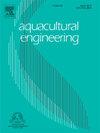Aquaculture fish counting and mass estimation method via vibration signal processing
IF 4.3
2区 农林科学
Q2 AGRICULTURAL ENGINEERING
引用次数: 0
Abstract
Information on the mass and counts of fish at different growth stages is crucial for precision feeding management and the improvement of fish farming environments. Grading operation plays a significant role in management and harvesting of cage culture. In this study, a counting and mass estimation of fish via vibration signal process method was proposed, using a roller-type fish grader to count and estimate the mass of fish during the grading process. First, we replicate fish dropping events during the grading process, when fish impact the mass measurement plate, on a test bench, and waveform data from vibration sensors located on the mass measurement plate were collected. Secondly, the waveform signal was analyzed, and trigger thresholds were set. When the signal exceeded the threshold, performed mathematical operations on the signal's data for counting and mass estimation until the signal left the threshold. The method was conducted on a test bench, and the results showed a coefficient of determination (R²) of 0.9970 and a Root Mean Square Error (RMSE) of 4.1724 g for mass estimation. Furthermore, the method was validated on a roller-type fish grader in practical applications, achieving average R² of 0.9862 and RMSE of 8.8529 g. The accuracy of fish counting reached 100 %. These experimental results demonstrate the proposed method can accurately count and estimate mass of fish.
通过振动信号处理进行水产养殖鱼类计数和质量估算的方法
不同生长阶段鱼类的质量和数量信息对于精确饲养管理和改善养鱼环境至关重要。分级操作在网箱养殖的管理和收获中发挥着重要作用。本研究提出了一种通过振动信号处理进行鱼类计数和质量估算的方法,利用滚筒式鱼类分级机对分级过程中的鱼类进行计数和质量估算。首先,我们在试验台上复制了分级过程中鱼撞击质量测量板时的掉落事件,并收集了来自质量测量板上振动传感器的波形数据。其次,对波形信号进行分析,并设置触发阈值。当信号超过阈值时,对信号数据进行数学运算,以进行计数和质量估算,直到信号离开阈值。该方法在试验台上进行了测试,结果显示,质量估计的决定系数(R²)为 0.9970,均方根误差(RMSE)为 4.1724 克。此外,该方法还在滚筒式鱼类分级机上进行了实际应用验证,平均 R² 为 0.9862,RMSE 为 8.8529 克。鱼体计数的准确率达到了 100%。这些实验结果表明,所提出的方法能准确计数和估算鱼的质量。
本文章由计算机程序翻译,如有差异,请以英文原文为准。
求助全文
约1分钟内获得全文
求助全文
来源期刊

Aquacultural Engineering
农林科学-农业工程
CiteScore
8.60
自引率
10.00%
发文量
63
审稿时长
>24 weeks
期刊介绍:
Aquacultural Engineering is concerned with the design and development of effective aquacultural systems for marine and freshwater facilities. The journal aims to apply the knowledge gained from basic research which potentially can be translated into commercial operations.
Problems of scale-up and application of research data involve many parameters, both physical and biological, making it difficult to anticipate the interaction between the unit processes and the cultured animals. Aquacultural Engineering aims to develop this bioengineering interface for aquaculture and welcomes contributions in the following areas:
– Engineering and design of aquaculture facilities
– Engineering-based research studies
– Construction experience and techniques
– In-service experience, commissioning, operation
– Materials selection and their uses
– Quantification of biological data and constraints
 求助内容:
求助内容: 应助结果提醒方式:
应助结果提醒方式:


